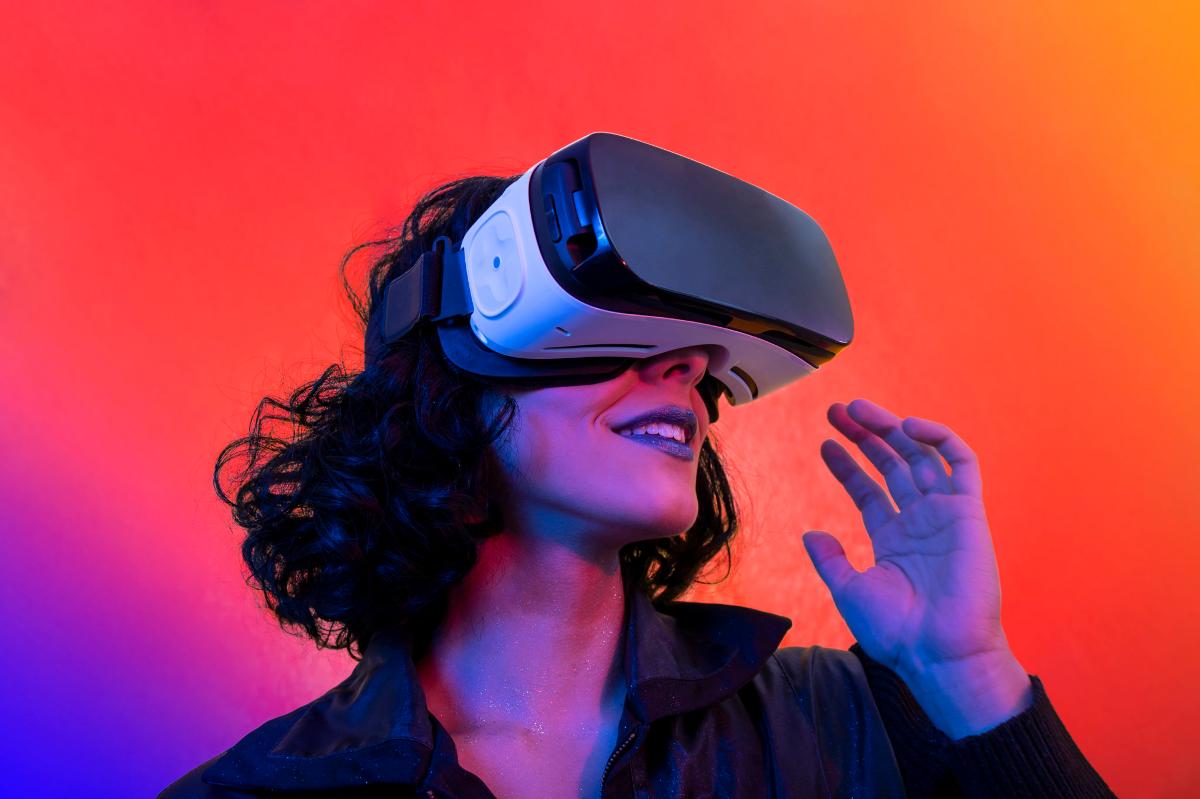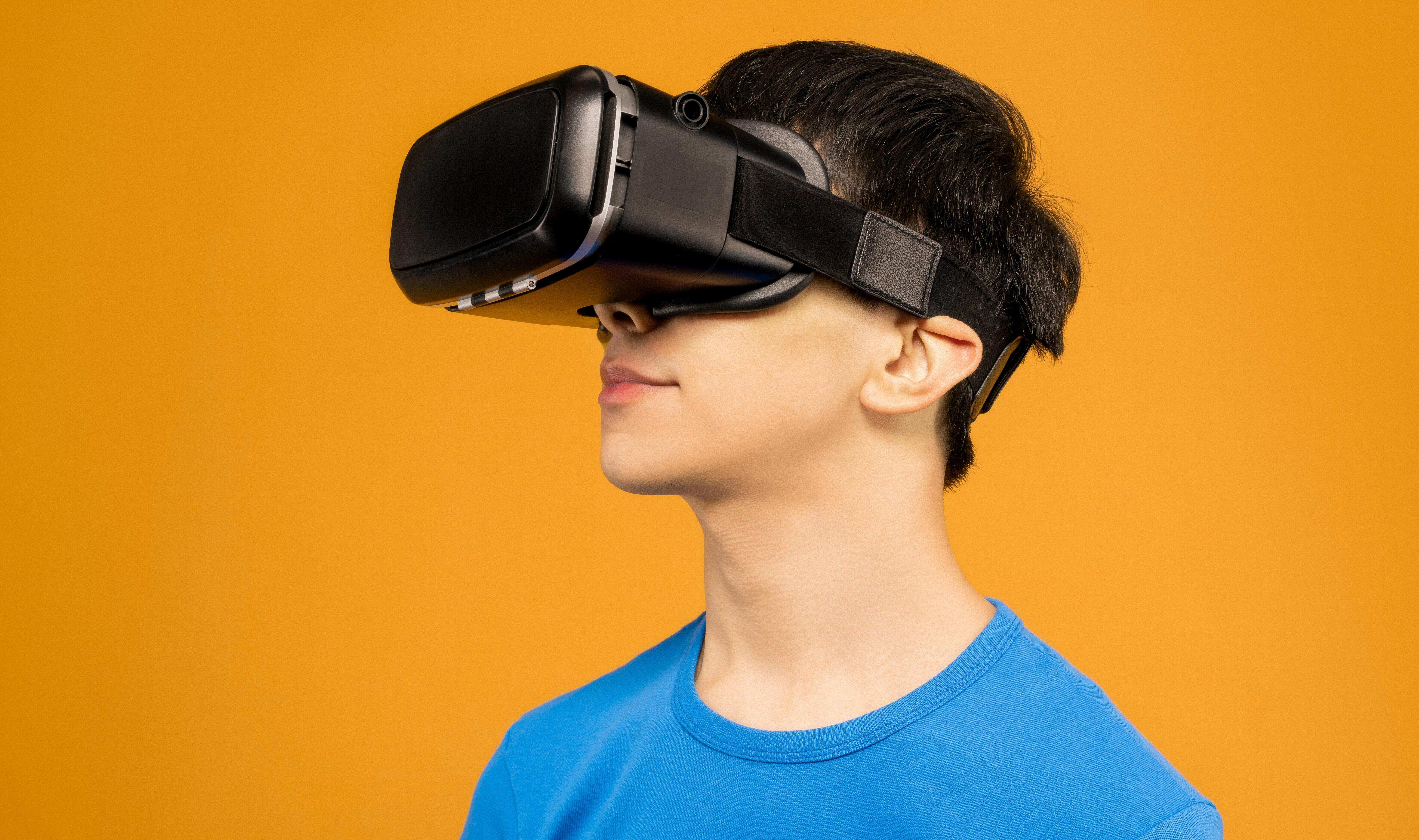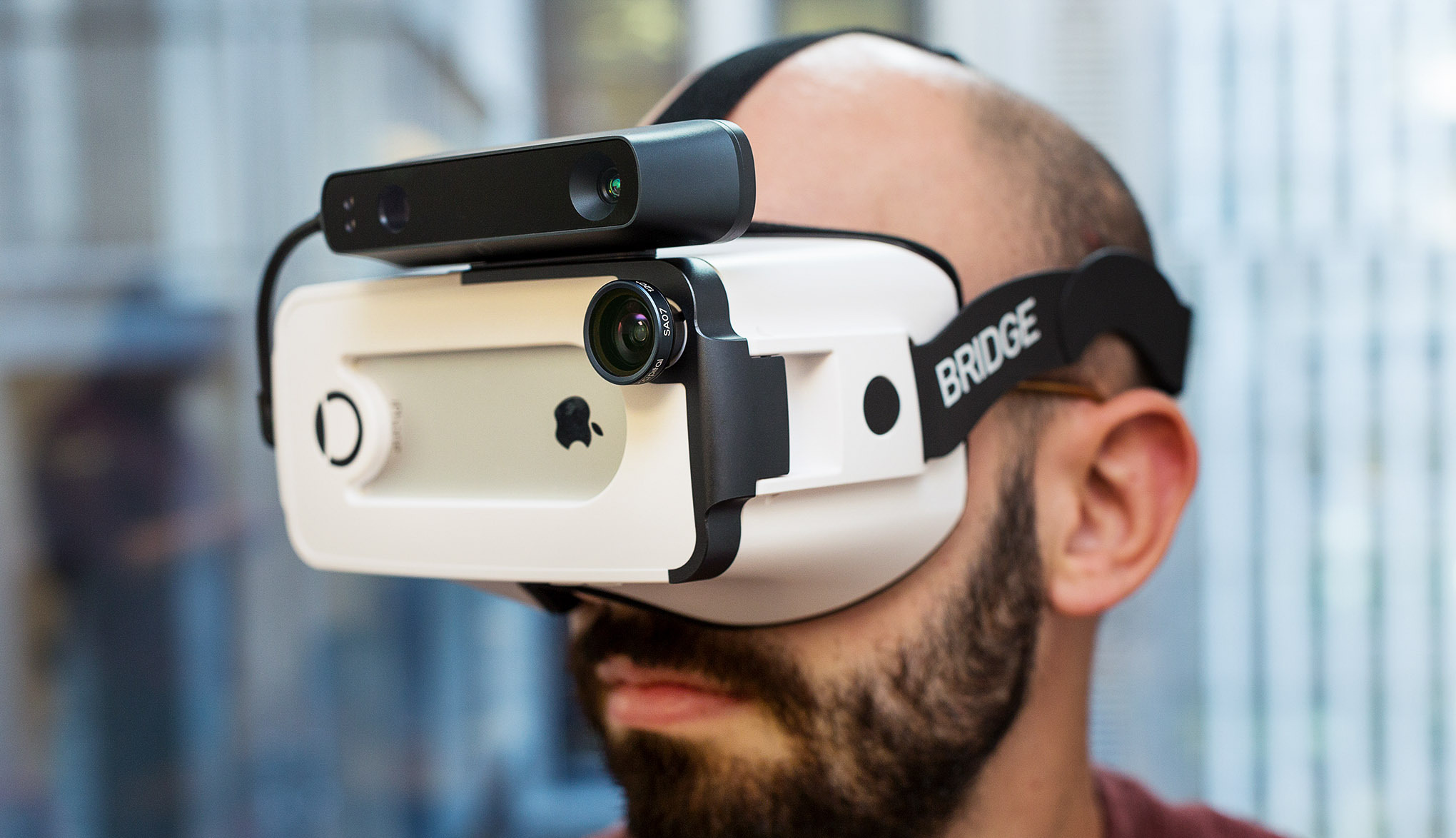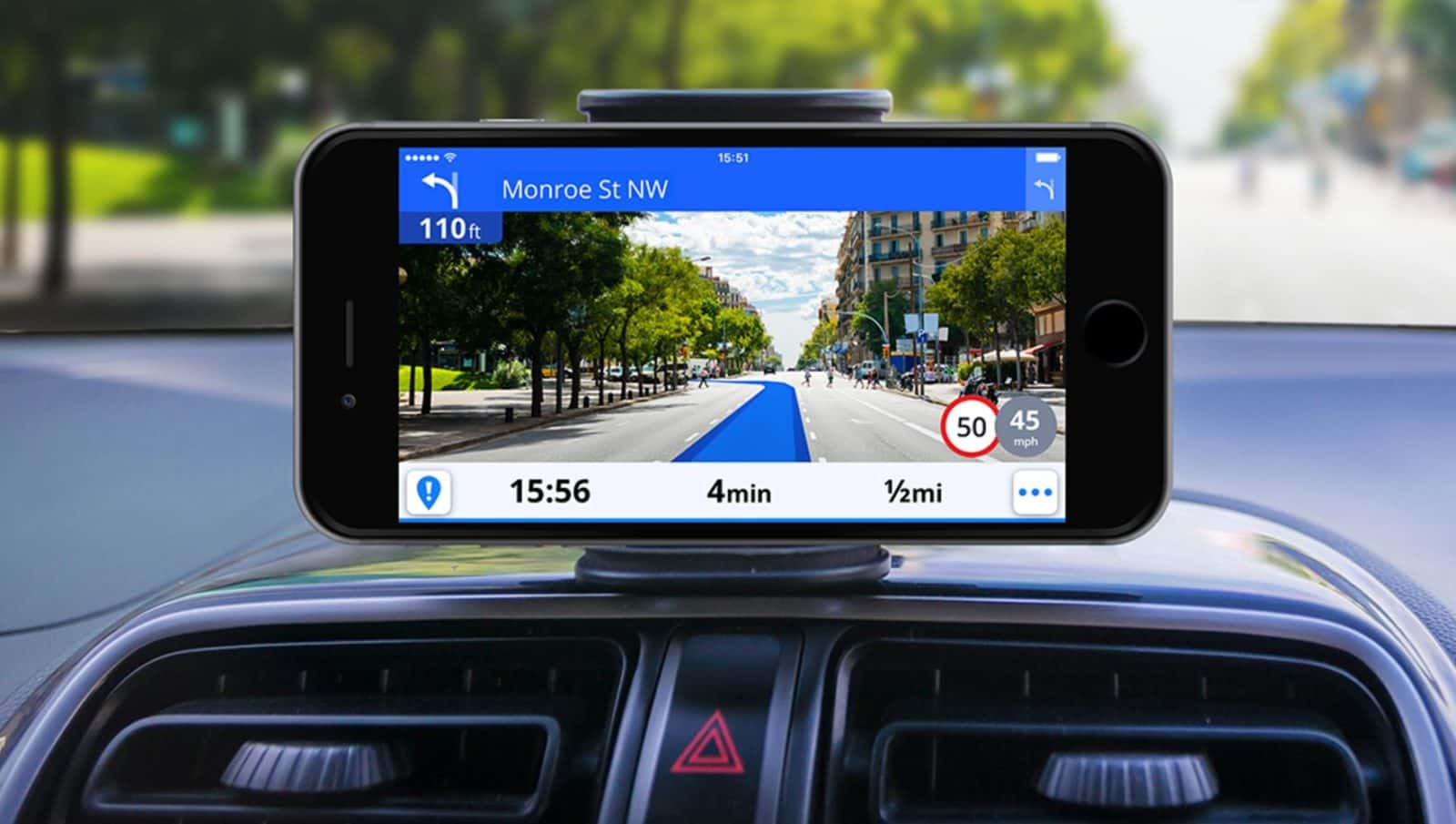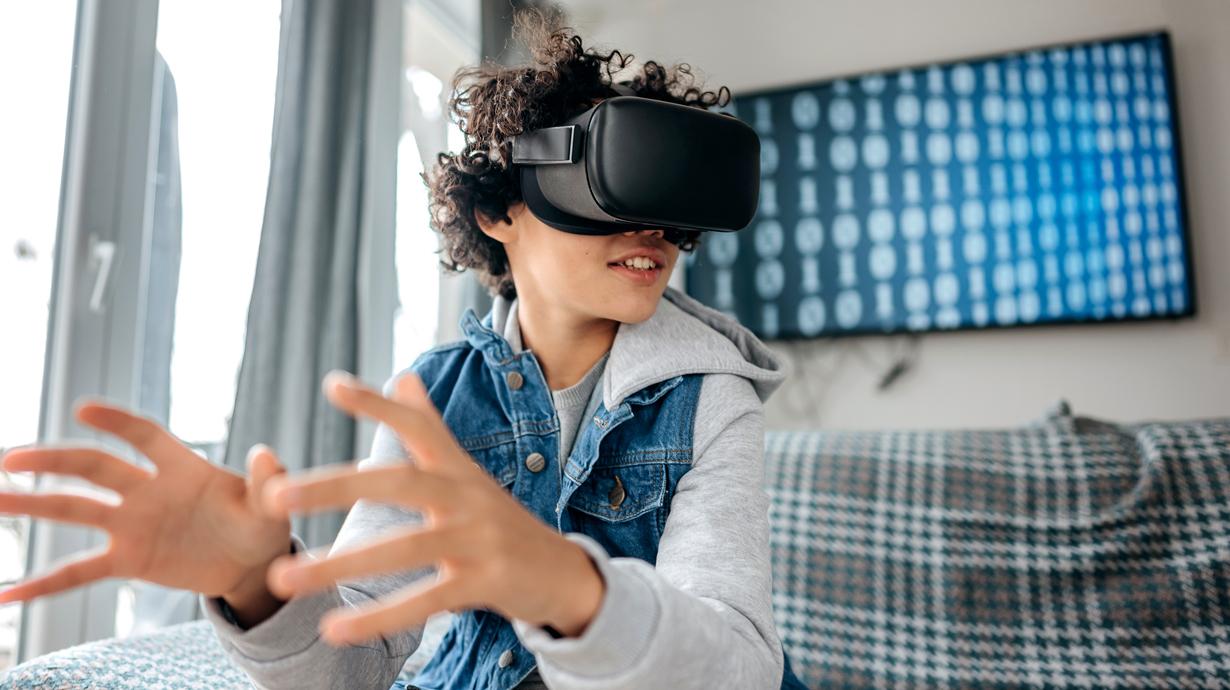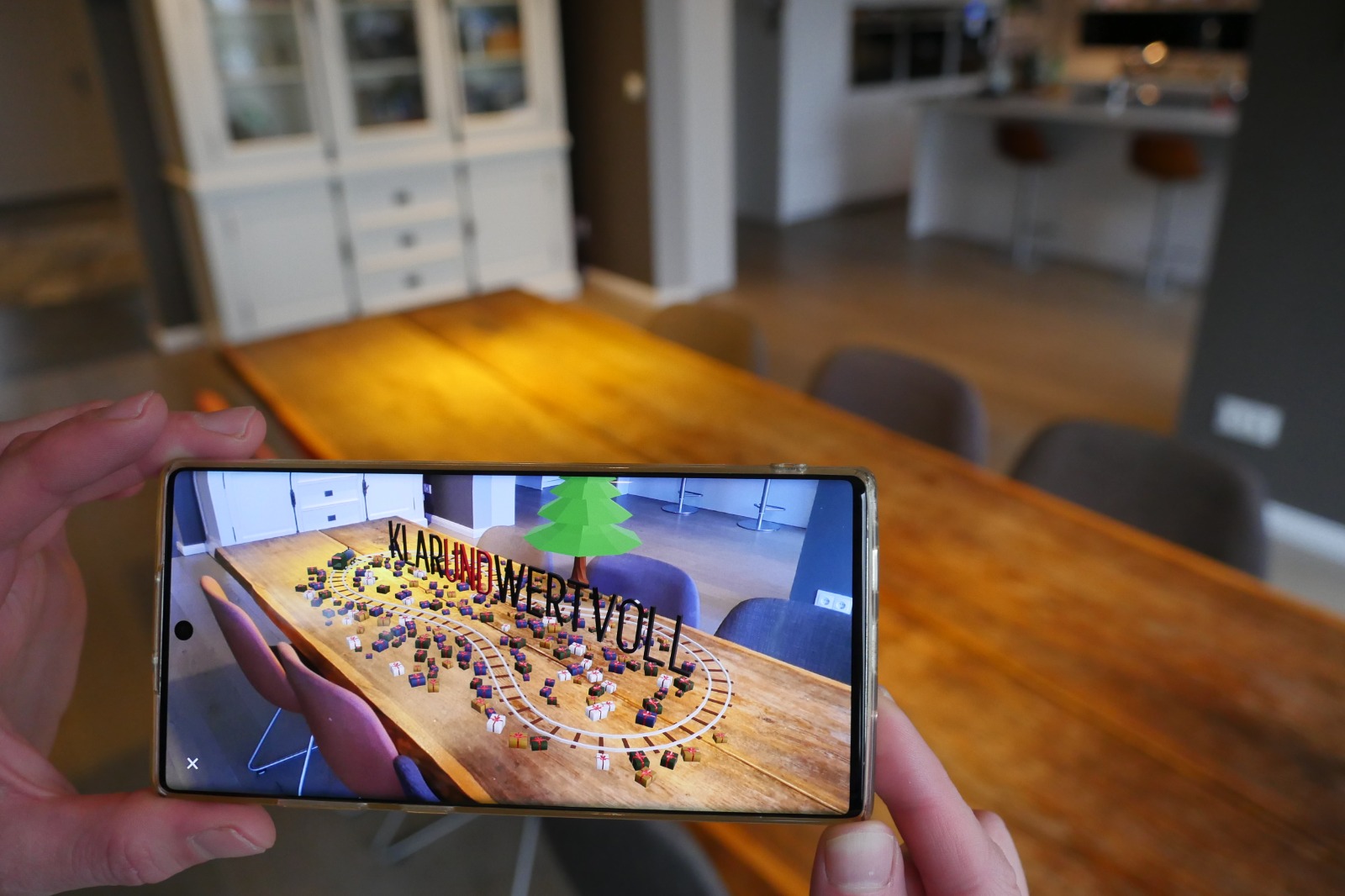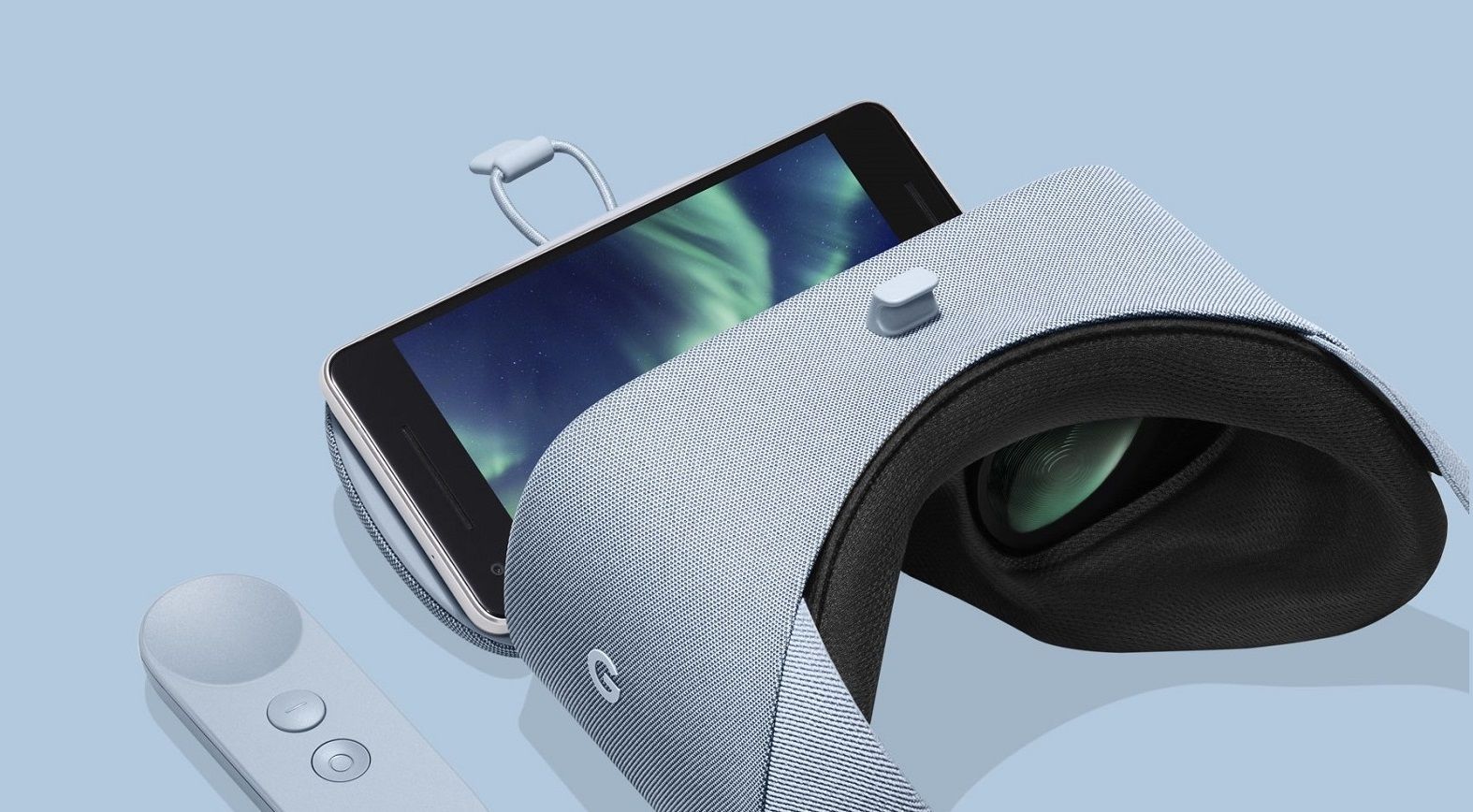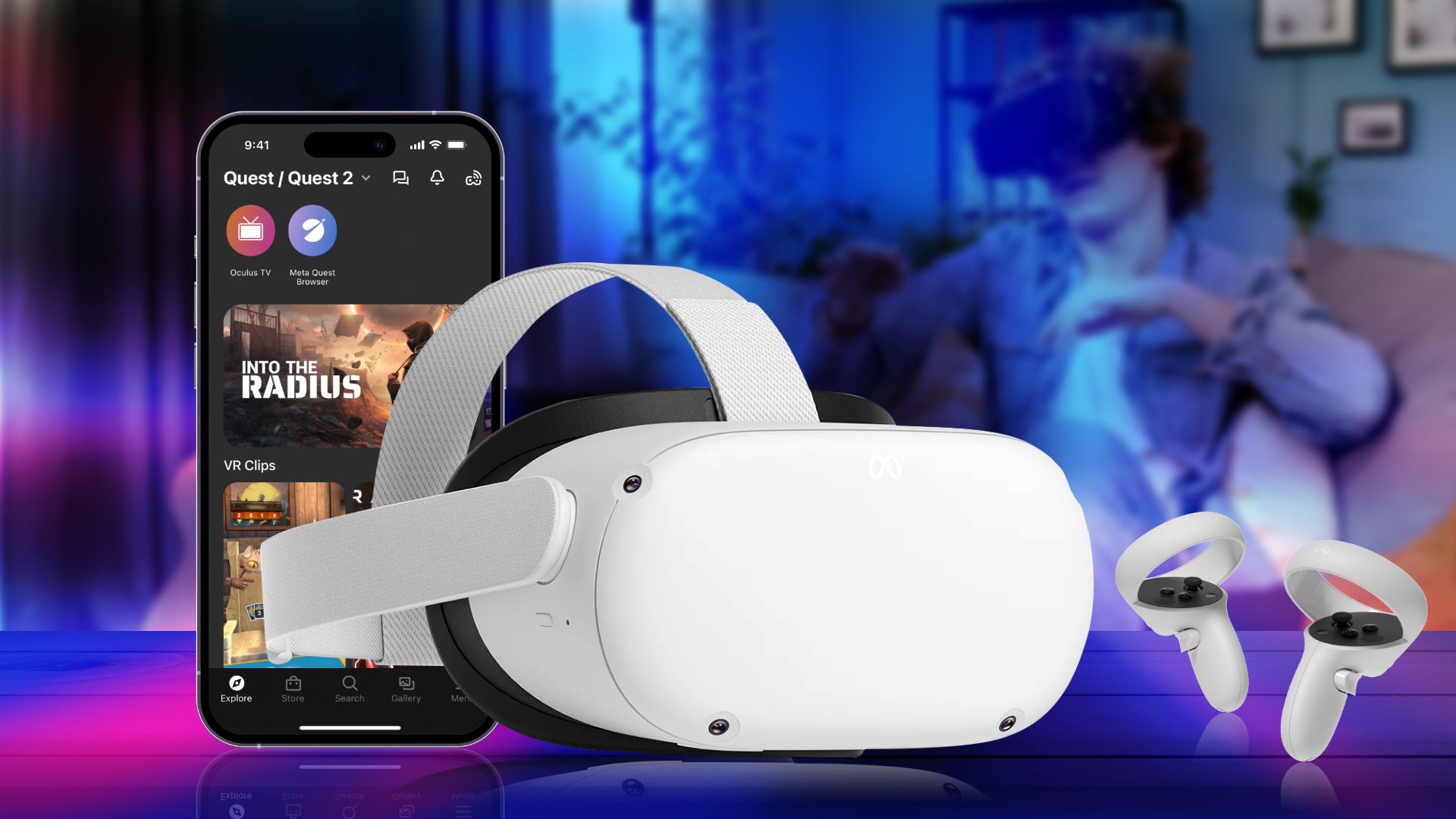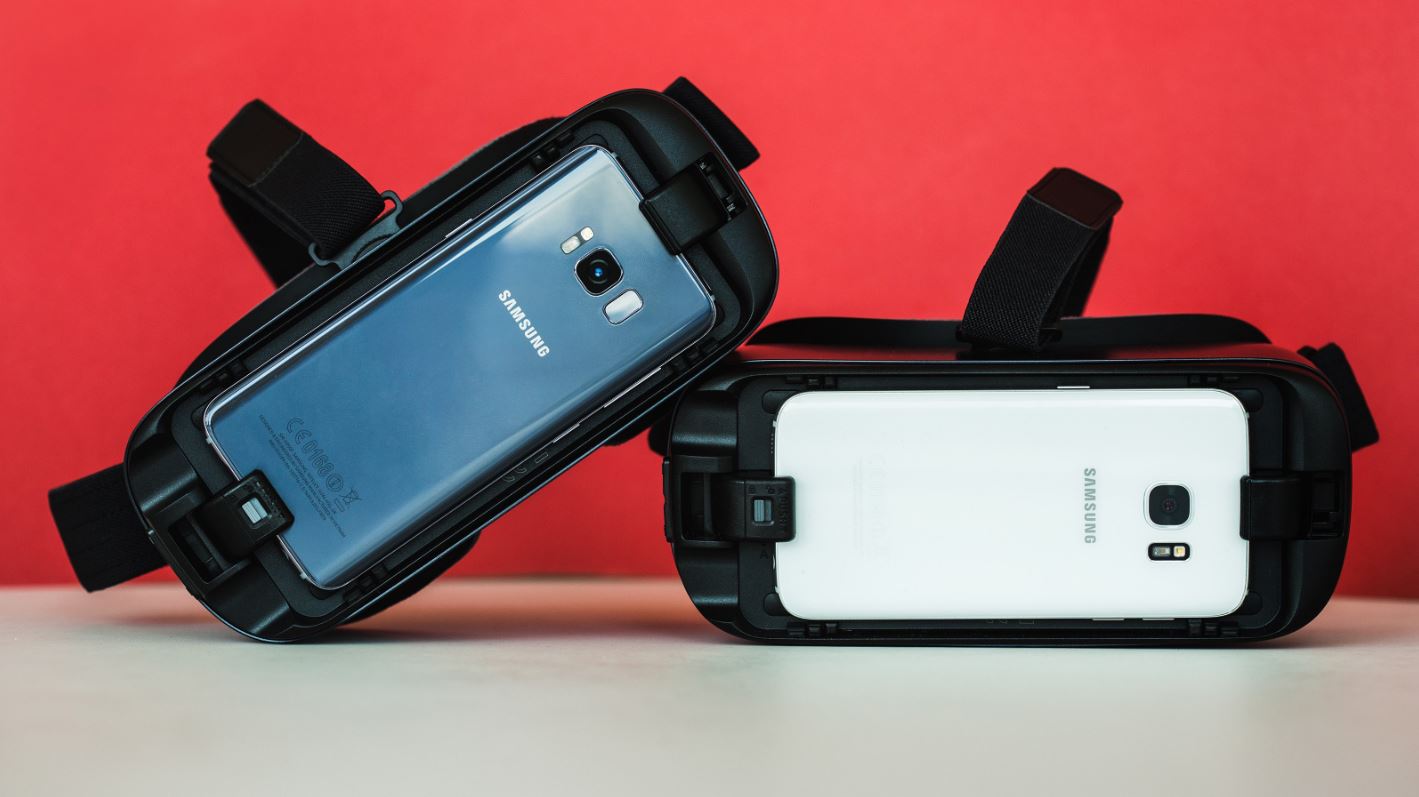Introduction
Welcome to the exciting world of virtual reality! With the rapid advancement of technology, virtual reality has become more accessible and popular than ever before. From immersive gaming experiences to virtual tours and educational simulations, the potential for virtual reality applications is limitless.
Whether you’re a developer, an entrepreneur, or simply a technology enthusiast, learning how to create a virtual reality app can be a rewarding and fulfilling endeavor. This article will guide you through the essential steps and considerations to help you bring your virtual reality app to life.
Virtual reality is a simulated experience that can be similar to or completely different from the real world. By leveraging cutting-edge technologies such as headsets and motion sensors, users can be transported to virtual environments and interact with them in a natural and immersive way.
The first step in creating a virtual reality app is understanding the different platforms available. There are several options to choose from, including the Oculus Rift, HTC Vive, PlayStation VR, and mobile platforms such as Google Cardboard and Samsung Gear VR. Each platform has its own specifications, capabilities, and target audience, so it’s important to research and select the one that aligns with your goals and target market.
Once you’ve chosen a platform, the next step is to plan your virtual reality app. Consider the purpose of your app and the target audience. Will it be a gaming app, an educational tool, or a utility app? Will it target casual users or professionals? Having a clear vision and defined goals will guide the development process and ensure you create a compelling and engaging app.
Understanding Virtual Reality
Virtual reality (VR) is an immersive technology that replicates an environment, either real or imaginary, and simulates the physical presence of the user within it. By using headsets or other devices, users can interact with the virtual world in a way that feels incredibly lifelike and immersive.
The foundation of virtual reality lies in the concept of presence. Presence refers to the feeling of being physically present in a virtual environment, even though the physical body remains in the real world. This sense of presence is created through a combination of realistic graphics, 3D audio, and intuitive user interactions.
Virtual reality technology has come a long way since its inception, and there are now multiple devices and platforms available for experiencing VR. Headsets like the Oculus Rift, HTC Vive, and PlayStation VR provide high-quality visuals and accurate head tracking, while mobile platforms like Google Cardboard and Samsung Gear VR offer a more affordable and accessible VR experience.
The applications of virtual reality are diverse and expanding rapidly. Gaming has been one of the primary drivers of virtual reality adoption, with VR games offering a level of immersion and interaction that traditional gaming cannot match. Virtual reality is also being used for educational purposes, allowing students to explore historical sites, experience scientific concepts, and engage in virtual simulations.
Another area where virtual reality shows immense potential is in virtual tours and experiences. From virtual travel to real estate walkthroughs, VR offers a way to transport users to different locations and provide a realistic sense of presence, even when physically distant.
Healthcare is yet another industry that has embraced virtual reality. It is being used for pain management, phobia treatment, physical therapy, and even surgical training. By creating realistic and controlled environments, virtual reality can enhance traditional medical therapies and improve patient outcomes.
As virtual reality technology continues to evolve, developers have a growing number of tools and resources at their disposal. From game engines like Unity and Unreal Engine to 3D modeling software and audio engines, building virtual reality experiences has become more accessible and streamlined.
As you delve deeper into the world of virtual reality, it’s essential to stay updated on the latest trends, technologies, and best practices. By understanding the foundations of VR and keeping up with industry advancements, you’ll be better equipped to create captivating and groundbreaking virtual reality experiences.
Choosing the Right Platform
When developing a virtual reality app, one of the first decisions you need to make is choosing the right platform. The platform you select will determine the target audience, the hardware requirements, and the development tools you’ll need to use.
There are several virtual reality platforms available, each with its own strengths, limitations, and user base. Let’s take a closer look at some of the popular options:
Oculus Rift: Developed by Oculus, a subsidiary of Facebook, the Oculus Rift is a high-end virtual reality headset known for its impressive visuals and immersive experiences. It requires a powerful gaming PC to run and offers a wide range of games and applications through the Oculus Store.
HTC Vive: The HTC Vive is another leading virtual reality headset that provides room-scale tracking, allowing users to move around in a physical space and interact with the virtual environment using handheld controllers. It offers a robust and extensive library of games and experiences.
PlayStation VR: Designed for use with the PlayStation 4 console, the PlayStation VR headset offers a more affordable entry point into virtual reality gaming. It provides a comfortable and user-friendly experience, with a growing library of games available on the PlayStation Store.
Mobile Platforms: Mobile virtual reality platforms, such as Google Cardboard and Samsung Gear VR, leverage smartphones to deliver VR experiences. These platforms offer a lower-cost option, making virtual reality more accessible to a wider audience. However, they typically have less powerful hardware and may not provide the same level of immersion as high-end headsets.
When choosing the right platform for your virtual reality app, consider factors such as your target audience, the hardware requirements, and the resources available to you. If you’re targeting gamers or a high-end user base, platforms like Oculus Rift or HTC Vive may be the best choice. If you’re aiming for a broader audience or have limited resources, mobile platforms like Google Cardboard or Samsung Gear VR can be more suitable.
It’s also important to consider the development tools and support available for each platform. Unity and Unreal Engine are popular game engines that offer comprehensive virtual reality development capabilities for multiple platforms. These engines provide an extensive range of resources, tutorials, and community support to help you bring your virtual reality app to life.
Ultimately, choosing the right platform for your VR app requires careful consideration of your target audience, technical requirements, and available resources. By selecting the platform that aligns with your goals and target market, you’ll be on your way to creating an engaging and successful virtual reality application.
Planning Your Virtual Reality App
Before diving into the development process, it’s crucial to plan your virtual reality app thoroughly. Proper planning will not only help you stay organized but also ensure that your app meets the needs and expectations of your target audience. Here are some key steps to consider when planning your VR app:
Define the Purpose: Start by clearly defining the purpose of your virtual reality app. Will it be a gaming app, an educational tool, or a utility app? Understanding the primary goal of your app will help you make informed decisions throughout the development process.
Identify the Target Audience: Determine who your target audience is. Will your app cater to casual users, professionals, or a specific niche? Analyzing the demographics, interests, and needs of your target audience will guide your design choices and feature implementation.
Research the Market: Conduct market research to gain insights into the existing virtual reality applications in your niche. Identify their strengths, weaknesses, and opportunities for improvement. This will help you differentiate your app and provide a unique value proposition.
Create a Feature List: Make a comprehensive list of features and functionalities that you want to include in your VR app. Prioritize the essential features to ensure a minimum viable product (MVP) can be delivered. Consider interactive elements, intuitive controls, and innovative experiences.
User Experience (UX) Design: Pay close attention to the user experience design of your VR app. Think about how users will interact with the virtual environment, navigate menus, and control actions. Strive for simplicity and intuitiveness to provide a seamless and enjoyable experience.
Storyboarding and Flowcharts: Create storyboards and flowcharts to visualize the flow and user journey within your app. This will help you identify potential bottlenecks, usability issues, or missing features. Iteratively refine your storyboard until you have a clear and logical app flow.
Budgeting and Resource Allocation: Estimate the financial resources and time required for the development of your VR app. Consider the cost of technology, hardware, software licenses, and human resources. Allocate resources effectively to ensure a smooth development process.
Testing and Feedback: Plan for comprehensive testing throughout the development cycle. Consider alpha and beta testing phases to gather user feedback and iron out any bugs or usability issues. Continually iterate and improve your app based on user feedback.
By carefully planning your virtual reality app, you’ll have a solid foundation to build upon. This strategic approach will help you stay focused, meet project milestones, and deliver an app that resonates with your target audience.
Designing the User Interface
The user interface (UI) of your virtual reality app plays a crucial role in providing an immersive and intuitive experience for users. Designing a user-friendly and visually appealing UI is essential to enhance engagement and ensure a seamless interaction within the virtual environment. Here are some key considerations when designing the user interface for your VR app:
Consistency and Familiarity: Strive for consistency in your UI design to ensure users can navigate through your app effortlessly. Use familiar visual cues and icons that users can quickly recognize and understand. This will help reduce the learning curve and enhance the overall user experience.
Intuitive Controls: Design intuitive controls that are easy to understand and operate within the virtual environment. Consider using hand gestures, controller inputs, or gaze-based interactions to align with user expectations and provide a natural and immersive experience.
Clear Hierarchy and Navigation: Create a clear hierarchy in your UI design to guide users through the different sections and features of your app. Use visual cues such as color, size, and placement to signify important elements and facilitate navigation within the virtual environment.
Readable Text and Graphics: Ensure that text and graphics within your app are clear and legible. In virtual reality, users may need to focus their attention on different objects or elements within the environment. Use appropriate font sizes, colors, and contrast to enhance readability and avoid strain on the user’s eyes.
Optimize for Performance: Consider the performance implications of your UI design. VR apps need to run smoothly and respond quickly to user inputs to maintain immersion. Keep the UI design lightweight and avoid overly complex animations or effects that could affect performance.
Test for Usability: Conduct usability testing with real users to validate the effectiveness and usability of your UI design. Gather feedback on the intuitiveness, functionality, and overall user experience. Iteratively refine your UI based on user feedback to ensure a seamless and enjoyable interaction.
Consider Sound and Audio: Sound plays a significant role in virtual reality experiences. Design the UI to incorporate appropriate audio feedback, such as button clicks or confirmation sounds, to enhance user engagement. Ensure that audio cues are spatially positioned to provide a realistic and immersive experience.
Maintain Aesthetic Appeal: Pay attention to the overall aesthetic appeal of your UI design. Use appropriate color palettes, textures, and visual elements to create an engaging and visually pleasing environment. Align the UI design with your app’s branding and target audience preferences.
Designing the user interface for your virtual reality app requires a careful balance between usability, aesthetics, and immersion. By following these considerations, you can create an intuitive and visually appealing UI that enhances the overall user experience within the virtual environment.
Creating 3D Models and Environments
One of the most exciting aspects of virtual reality app development is creating the 3D models and environments that users will interact with. The 3D visuals and immersive environments are what make VR experiences truly engaging. Here are some key considerations when it comes to creating 3D models and environments for your VR app:
Concept and Art Direction: Begin by developing a clear concept and art direction for your app. Decide on the style, theme, and overall aesthetic that you want to achieve. Whether it’s a realistic environment, a fantasy world, or a stylized setting, having a well-defined concept will guide your modeling and design choices.
Modeling Software: Choose a 3D modeling software that suits your needs and skill level. Popular options include Blender, Maya, 3ds Max, and ZBrush. These software tools offer a wide range of modeling, texturing, and animation capabilities to bring your ideas to life.
Optimize for Performance: Keep in mind that VR applications require high-performance rendering to maintain smooth framerates and reduce motion sickness. Optimize your 3D models and environments by minimizing polygon count, implementing efficient textures, and using LOD (Level of Detail) techniques to ensure optimal performance on a variety of VR hardware.
Realism and Detail: If you aim to create realistic environments, pay attention to details. Utilize high-quality textures, advanced lighting techniques, and realistic shaders to achieve a greater level of immersion. Incorporate real-world references and meticulous attention to detail to enhance user engagement.
Interaction and Interactivity: Consider how users will interact with your 3D models and environments. Think about object manipulation, physics, and interactive elements that provide a tactile and dynamic experience. Incorporate intuitive controls and interaction mechanics that match the virtual reality environment.
Testing and Iteration: Test your 3D models and environments in a VR environment to ensure they look and feel as intended. Examine the scale, proportions, lighting, and overall atmosphere within the VR app. Iterate based on user feedback and refine the details to enhance the immersive experience.
Collaborate with Artists and Designers: If you are not an experienced 3D artist or designer, consider collaborating with professionals. Tap into the expertise of 3D modelers, texture artists, and level designers to create visually stunning and appealing environments that align with your app’s vision.
Experiment and Innovate: Virtual reality opens up unique possibilities for creativity and innovation. Don’t be afraid to think outside the box and experiment with unconventional ideas and concepts. Push the boundaries of what’s possible in VR and create memorable and distinctive 3D models and environments.
Captivating 3D models and environments are essential to delivering a truly immersive virtual reality experience. By considering these key factors and investing time and effort into modeling and design, you can create visually stunning and engaging worlds for users to explore within your VR app.
Implementing Interactions and Movements
One of the most important aspects of a virtual reality app is the ability for users to interact with and move around within the virtual environment. Implementing intuitive and immersive interactions and movements is crucial to enhance the overall user experience. Here are some key considerations when it comes to implementing interactions and movements in your VR app:
Hand Tracking: Take advantage of hand tracking capabilities to allow users to interact with objects and elements within the virtual environment. This can provide a more natural and immersive experience compared to traditional controller-based interactions. Consider using gestures, hand poses, and finger tracking to enable a wide range of interactions.
Controller Input: If your VR platform utilizes controllers, design intuitive and responsive input mechanisms. Take advantage of the controller’s buttons, triggers, and touchpads to enable various interactions. Implement logical button mapping and use haptic feedback to enhance the sense of touch and immersion.
Motion and Movement: Implement various movement options to give users freedom and control within the virtual environment. Consider different locomotion methods such as teleportation, smooth locomotion, or room-scale movement. Strive for a balance between providing fluid movement and reducing motion sickness for a comfortable user experience.
Object Interactions: Enable realistic object interactions by implementing physics-based simulations. Allow users to pick up, move, rotate, and interact with virtual objects. Consider implementing object collisions and realistic object behaviors to provide a more tactile and immersive experience.
Menu and UI Navigation: Design intuitive and user-friendly menus and UI navigation systems. Consider gaze-based navigation, raycasting, or handheld UI elements that can be interacted with using controllers. Ensure that menu and UI elements are easy to read and interact with, even in the immersive VR environment.
Feedback and Responsiveness: Provide visual and audio feedback to users when they interact with objects or perform actions. This helps to provide a sense of presence and improves the overall responsiveness of the app. Incorporate sound effects, particle effects, or visual indicators to enhance the feedback and make the interactions feel more engaging.
User Testing and Optimization: Test and iterate on the interactions and movements within your VR app. Conduct user testing to gather feedback and identify any usability issues or discomfort. Iterate on the implementation based on user feedback to ensure that interactions are intuitive, responsive, and provide a seamless and enjoyable experience.
Accessibility: Consider the needs of users with disabilities or physical limitations. Implement alternative input methods or controls to ensure that all users can interact with and navigate the app effectively. Strive for inclusivity and make your VR app accessible to a diverse range of users.
Implementing interactions and movements is a critical aspect of creating an immersive virtual reality app. By considering these factors and designing intuitive, responsive, and engaging interactions, you can provide users with a seamless and immersive experience within your VR environment.
Integrating Sound and Audio Effects
Sound and audio effects play a vital role in immersing users within the virtual reality experience. By integrating rich and immersive audio, you can enhance the overall ambiance, realism, and engagement of your VR app. Here are some key considerations when it comes to integrating sound and audio effects:
3D Spatial Audio: Implement 3D spatial audio to create a realistic and immersive soundscape within the virtual environment. Utilize audio technologies that can simulate directional sound sources, enabling users to locate and identify sounds based on their position and proximity in the virtual world.
Environmental Sounds: Incorporate ambient sounds and environmental effects to enhance the realism of your VR app. Consider using sounds such as wind, water, footsteps, or background chatter to create a sense of presence and immerse users within the virtual world.
Object Sounds: Provide audio feedback for interactions with virtual objects. Implement sound effects that match the properties and behavior of the objects when users touch, manipulate, or collide with them. This adds a level of realism and tactile feedback to the user’s interactions.
Music and Audio Tracks: Integrate background music or audio tracks that complement the theme and mood of your VR app. Music can evoke emotions and enhance the overall experience. Consider dynamic audio tracks that respond to the user’s actions or adapt based on the progression of the app.
Voice and Dialogues: If your VR app includes characters or narrative elements, consider incorporating voice acting or dialogues. This adds a layer of storytelling and immersion to the experience. Ensure that voices are clear and intelligible, even in the midst of other audio elements and environmental sounds.
Sound Cues and Feedback: Use sound cues and feedback to guide users and provide information within the VR app. Sound effects can signify achievements, events, or important transitions, enhancing user engagement and providing a more interactive experience.
Audio Optimization: Optimize the audio assets and processing to ensure optimal performance. Compress audio files to balance quality and file size. Consider dynamic audio mixing techniques to prioritize important audio sources and prevent audio overload in complex scenes.
User Testing and Iteration: Test the integration of sound and audio effects in your VR app with real users. Gather feedback on the effectiveness of the audio elements, clarity, and overall impact on the user experience. Continuously iterate and refine the audio integration based on user feedback.
Accessibility: Consider accessibility needs when integrating sound and audio effects. Provide visual alternatives or textual descriptions for important auditory cues to accommodate users with hearing impairments or preferences for muted audio.
By carefully integrating sound and audio effects into your VR app, you can create a more immersive and engaging experience for users. From realistic environmental sounds to interactive object audio, the right use of sound can enhance the overall realism and immersion within your virtual reality environment.
Optimizing Performance for Virtual Reality
Performance optimization is crucial in virtual reality (VR) app development to ensure smooth and immersive experiences for users. VR applications demand high computational power and require consistent frame rates to maintain immersion and avoid motion sickness. Here are some key considerations for optimizing performance in your VR app:
Optimize Graphics: Optimize graphics to reduce the rendering workload on the CPU and GPU. Use efficient rendering techniques such as level of detail (LOD) models, culling, and occlusion to render only what is necessary. Minimize the number of polygons, optimize textures, and use GPU-friendly shaders to achieve optimal visuals without sacrificing performance.
Reduce Latency: Minimize latency by optimizing the input-to-display pipeline. Reduce processing time between user inputs and their corresponding visual or auditory feedback. This can involve optimizing hardware, minimizing software delays, and choosing the appropriate rendering techniques, such as single-pass rendering or frame prediction.
Implement Asynchronous Timewarp and Spacewarp: Utilize asynchronous timewarp and spacewarp techniques provided by VR frameworks to reduce latency and improve perceived smoothness. Timewarp corrects for rotational head movement, while spacewarp corrects for positional head movement. These techniques help maintain a consistent VR experience even if the frame rate drops momentarily.
Optimize Physics Calculations: If your VR app involves physics simulations, optimize them to run efficiently. Consider the level of detail required for physics calculations and adjust accordingly. Use physics engines that offer optimization features, such as spatial partitioning, to reduce the computational cost of physics interactions.
Streamline Code and Algorithms: Review and optimize your code to eliminate unnecessary operations and reduce computational overhead. Use efficient algorithms and data structures specific to VR applications. Minimize memory allocations and avoid performance bottlenecks. Profile your code to identify and address any performance issues.
Manage Textures and Memory Usage: Efficiently manage textures and memory usage to prevent performance degradation. Optimize texture sizes, formats, and compression techniques to reduce memory footprint and bandwidth requirements. Implement streaming techniques to load and unload assets dynamically based on the user’s viewpoint.
Test on Target Hardware: Regularly test your VR app on the target hardware to ensure optimal performance. Test across different VR platforms and devices to identify performance variations and make necessary adjustments. Use performance profiling tools to identify areas that require optimization.
Consider Platform-Specific Performance Guidelines: Follow platform-specific performance guidelines provided by VR hardware manufacturers and SDKs. These guidelines offer valuable recommendations and best practices for optimizing performance on specific devices and platforms. Adhering to these guidelines can help ensure the best possible performance on target hardware.
Iterate and Iterate: Optimization is an ongoing process. Continuously refine and optimize your VR app based on user feedback and performance data. Seek input from users during development stages to identify areas that may require additional optimization.
Optimizing performance in your VR app is crucial for delivering a smooth, immersive, and comfortable experience for users. By applying these optimization techniques, you can create a VR application that performs optimally on target hardware, ensuring user satisfaction and engagement with your virtual reality experience.
Testing and Bug Fixing
Testing is a critical phase in the development of a virtual reality (VR) app. It ensures that your app functions as intended, provides a seamless user experience, and is free from bugs and glitches. Here are some key considerations for testing and bug fixing in your VR app:
Functional Testing: Conduct comprehensive functional testing to ensure that all features and interactions within your VR app work as intended. Test different scenarios, user inputs, and edge cases to ensure the app performs as expected in various situations.
Performance Testing: Test the performance of your VR app to ensure that it runs smoothly and maintains a consistent framerate. Check for any performance bottlenecks, latency issues, or memory leaks that could impact the user experience. Test on different hardware configurations to identify any platform-specific performance issues.
Usability Testing: Involve real users in usability testing to identify any issues with the app’s usability, intuitiveness, and overall user experience. Gather feedback on navigation, interactions, comfort, and any discomfort or motion sickness experienced during use. Implement improvements based on user feedback to enhance the usability of your VR app.
Bug Tracking and Reporting: Establish a bug tracking and reporting system to capture and address any issues identified during testing. Track and prioritize reported bugs based on their severity and impact on the user experience. Ensure clear communication and collaboration between developers, testers, and other stakeholders to streamline the bug fixing process.
Regression Testing: Perform regression testing to ensure that bug fixes or new implementations have not introduced new issues or affected existing functionality. Validate that previously identified bugs have been successfully resolved and that the app continues to function as expected after any changes or updates.
Compatibility Testing: Test your VR app on different platforms, devices, and operating system versions to ensure compatibility and consistent performance across various hardware configurations. Validate that your app functions correctly on each targeted platform and that user experience is not compromised.
Stress Testing: Conduct stress testing to evaluate your VR app’s performance under extreme conditions, such as high input rates or heavy load. Identify any performance bottlenecks, memory leaks, or unexpected behavior that may occur when your app is pushed to its limits.
Continuous Iteration: Bug fixing is an ongoing process throughout the development cycle. Continuously address reported bugs, issues, and user feedback. Prioritize bugs based on their impact and address them in subsequent development iterations. Regularly release updates that include bug fixes and improvements to ensure a polished and reliable VR app.
User Acceptance Testing: Involve a group of target users in user acceptance testing to gain insights into their overall satisfaction with the app. Collect feedback on the app’s performance, usability, and overall experience. Use this feedback to further refine your VR app and ensure it meets user expectations.
Testing and bug fixing are crucial to delivering a high-quality VR app with a seamless user experience. By thoroughly testing your app and addressing all identified issues, you can create a reliable and enjoyable VR experience for your users.
Publishing and Distributing Your App
Once you have completed the development and testing of your virtual reality (VR) app, it’s time to bring it to the market and make it available to users. Publishing and distributing your app involves several important steps to ensure a smooth and successful launch. Here are some key considerations:
Choose the Right Platform: Identify the platforms or app stores where you want to publish your VR app. Depending on your target audience and the platform you developed your app for, this could include platforms like Oculus Store, Steam VR, Google Play, or the Apple App Store.
Prepare App Assets: Prepare necessary app assets such as icons, screenshots, descriptions, and promotional materials. Ensure that these assets accurately represent your app’s features and functionalities while appealing to potential users.
Create Developer Accounts: Create developer accounts on the platforms you have chosen for app distribution. Follow the guidelines and regulations specific to each platform and complete the necessary registration and verification processes.
App Store Guidelines: Familiarize yourself with the app store guidelines and policies of the platforms you are targeting. Ensure that your app adheres to these guidelines, including guidelines related to content, user privacy, and age restrictions.
App Submission: Follow the submission process outlined by each platform to submit your app for review. Provide all required information and assets accurately and thoroughly. Be prepared for an app review process, where your app will be evaluated for quality, functionality, and adherence to guidelines.
Marketing and Promotion: Develop a marketing plan to promote your VR app. Utilize various channels such as social media, online communities, influencer collaborations, and targeted advertising to create awareness and generate interest among potential users.
User Support and Feedback: Set up channels for user support and feedback. Ensure that users can easily reach out to you with any issues or questions they may have. Actively collect feedback and reviews to understand user experiences and make necessary improvements to your app.
App Updates: Continuously update and improve your VR app based on user feedback and identified issues. Regularly release updates that address bugs, add new features, and enhance the overall user experience. Keeping your app up-to-date will help retain users and attract new ones.
Localization: Consider localizing your app to reach a broader audience. Translate your app’s text and UI elements into multiple languages to make it accessible and appealing to users worldwide.
Monitor Performance and Analytics: Monitor the performance of your app after it has been published. Track user engagement, downloads, and in-app activities using analytics tools. Use this data to identify trends, measure success, and make informed decisions for further improvements.
Community Engagement: Engage with your user community through forums, social media, and app store reviews. Respond to user feedback, address concerns, and foster a positive relationship with your user base. This can help build loyalty and encourage positive word-of-mouth recommendations.
By following these steps and best practices, you can effectively publish and distribute your VR app to the targeted app stores and reach a wider audience. Remember to maintain regular updates, engage with users, and continuously improve your app based on feedback to maximize its success.
Conclusion
Creating a virtual reality (VR) app is an exciting and rewarding endeavor, offering endless possibilities for immersive and engaging experiences. Throughout this article, we’ve discussed the essential steps and considerations for developing a VR app, from understanding the basics of VR to publishing and distributing your app to the market.
To start, it is crucial to have a clear vision and purpose for your VR app. Understanding your target audience, selecting the right platform, and planning the app’s features and functionality are all essential steps in the development process. Designing the user interface, creating 3D models and environments, and implementing interactions and movements add depth and interactivity to your app.
Integrating sound and audio effects further enhance the immersive experience, while optimizing performance ensures that your app runs smoothly and responds to user input in real-time. Thorough testing and bug fixing guarantee a high-quality, user-friendly app, ready to be published and distributed to the desired platforms.
When it comes time to publish and distribute your app, choosing the right platforms, preparing the necessary assets, and following the guidelines and policies set by app stores are critical steps. Once your app is live, effective marketing and promotion strategies, user support, and continuous updates based on user feedback contribute to a successful app launch and user engagement.
Throughout the entire process, it is vital to listen to your users, collect feedback, and strive for ongoing improvement. VR technology is continually evolving, and keeping up with trends, technologies, and industry best practices is key to staying ahead in this ever-growing field.
Now that you have a better understanding of the different stages involved in creating a VR app, it’s time to apply this knowledge and embark on your own virtual reality app development journey. With creativity, attention to detail, and a focus on user experience, you can create captivating and immersive VR experiences that will leave your users amazed and coming back for more.







